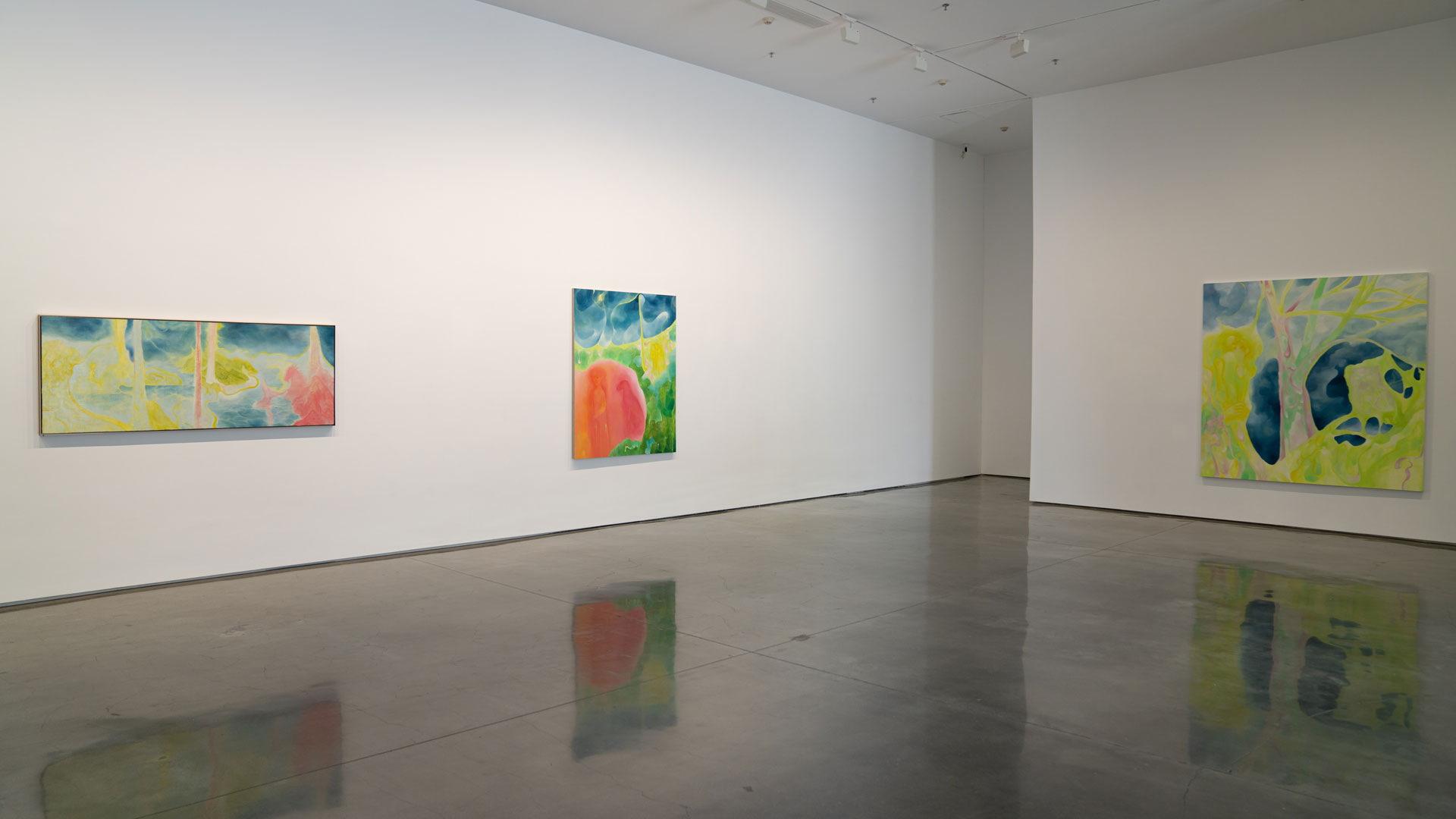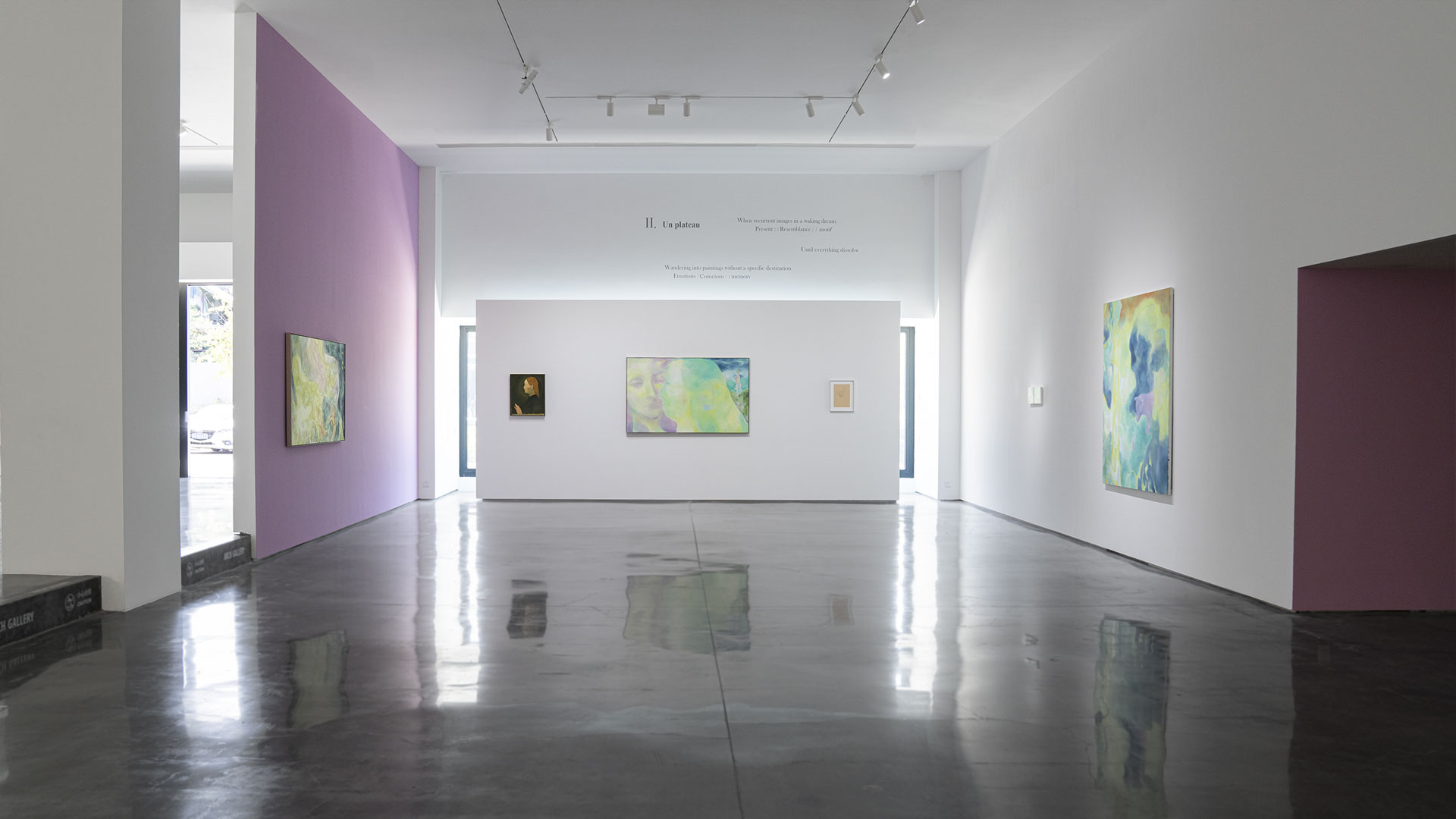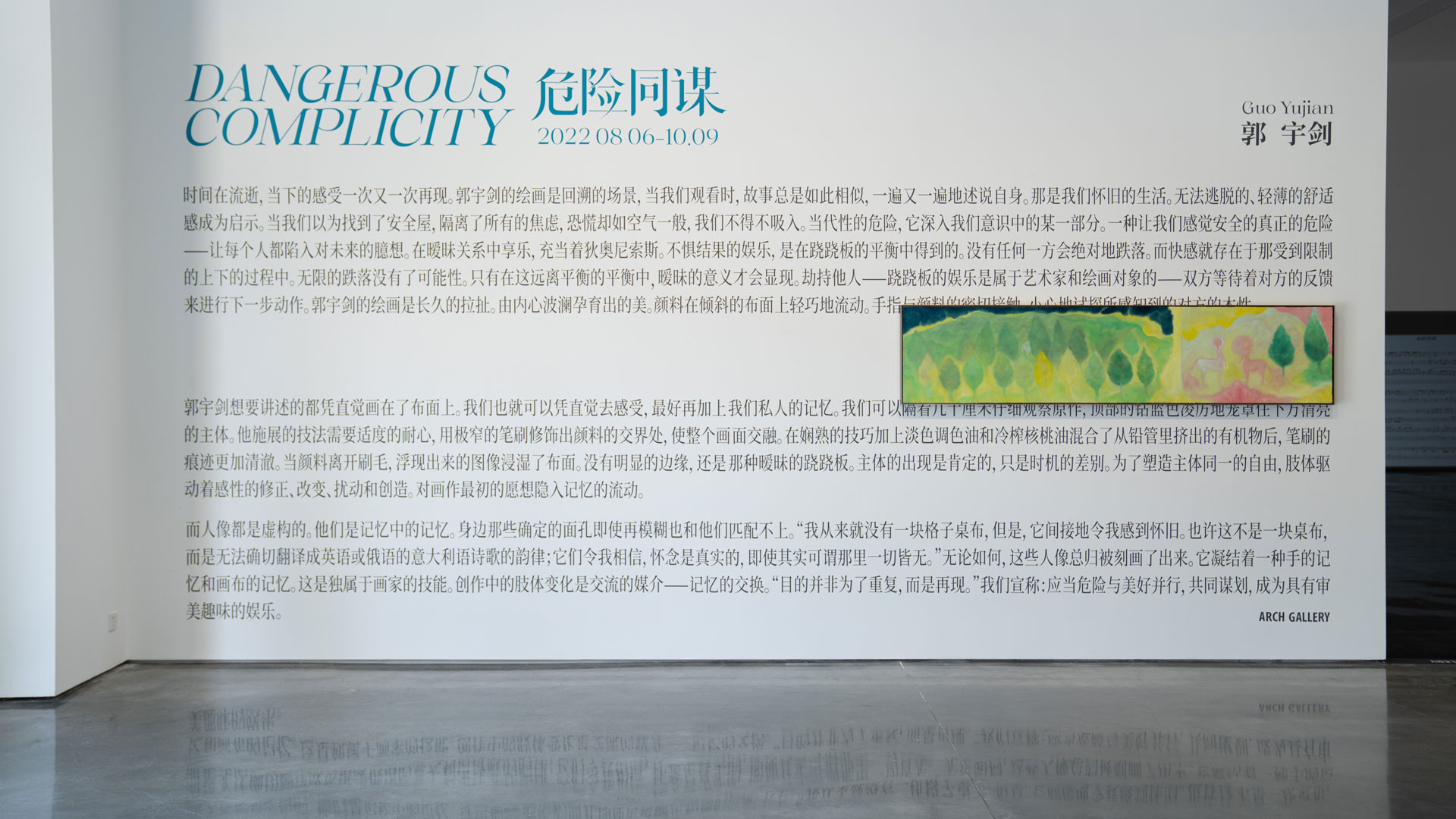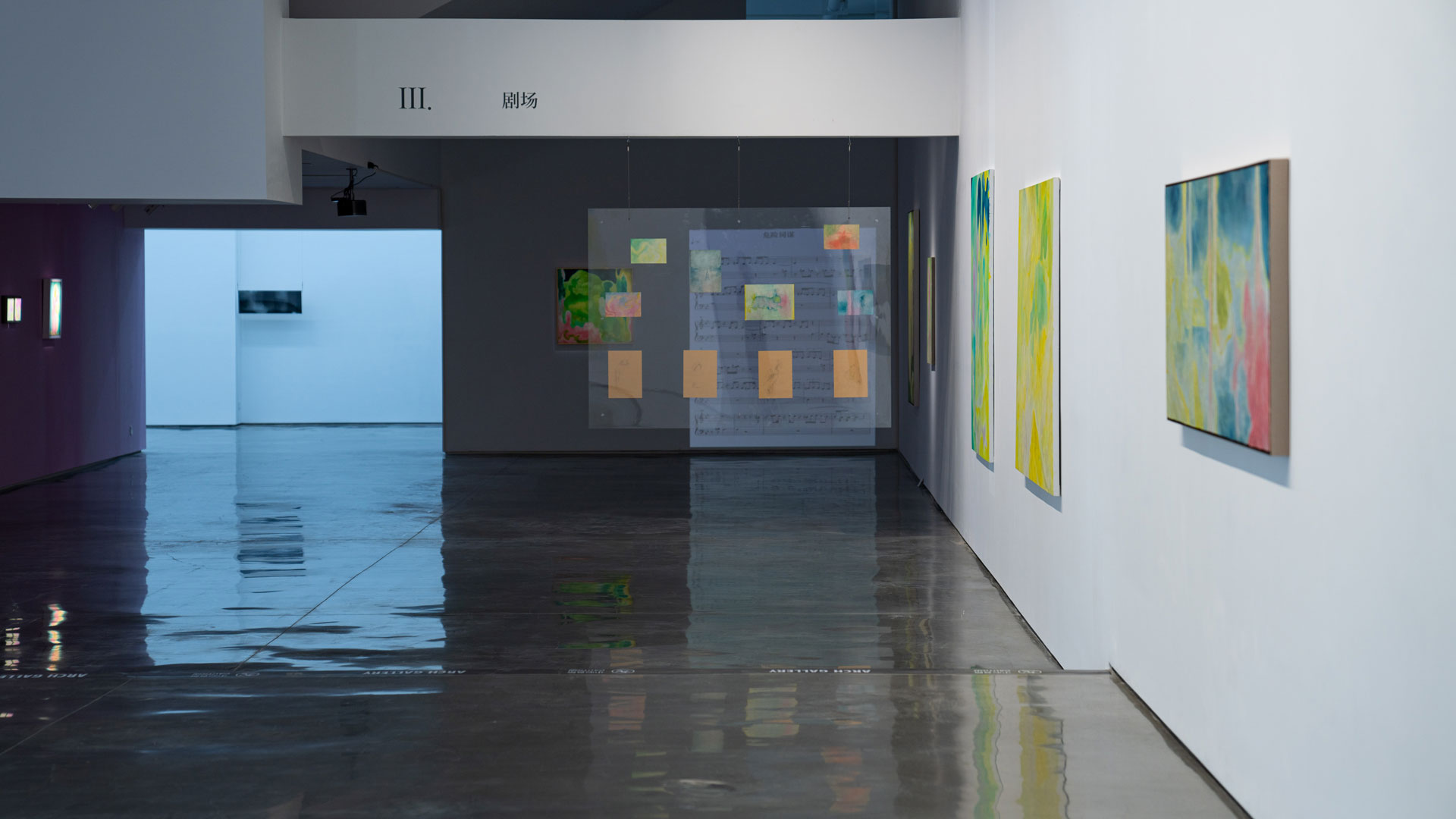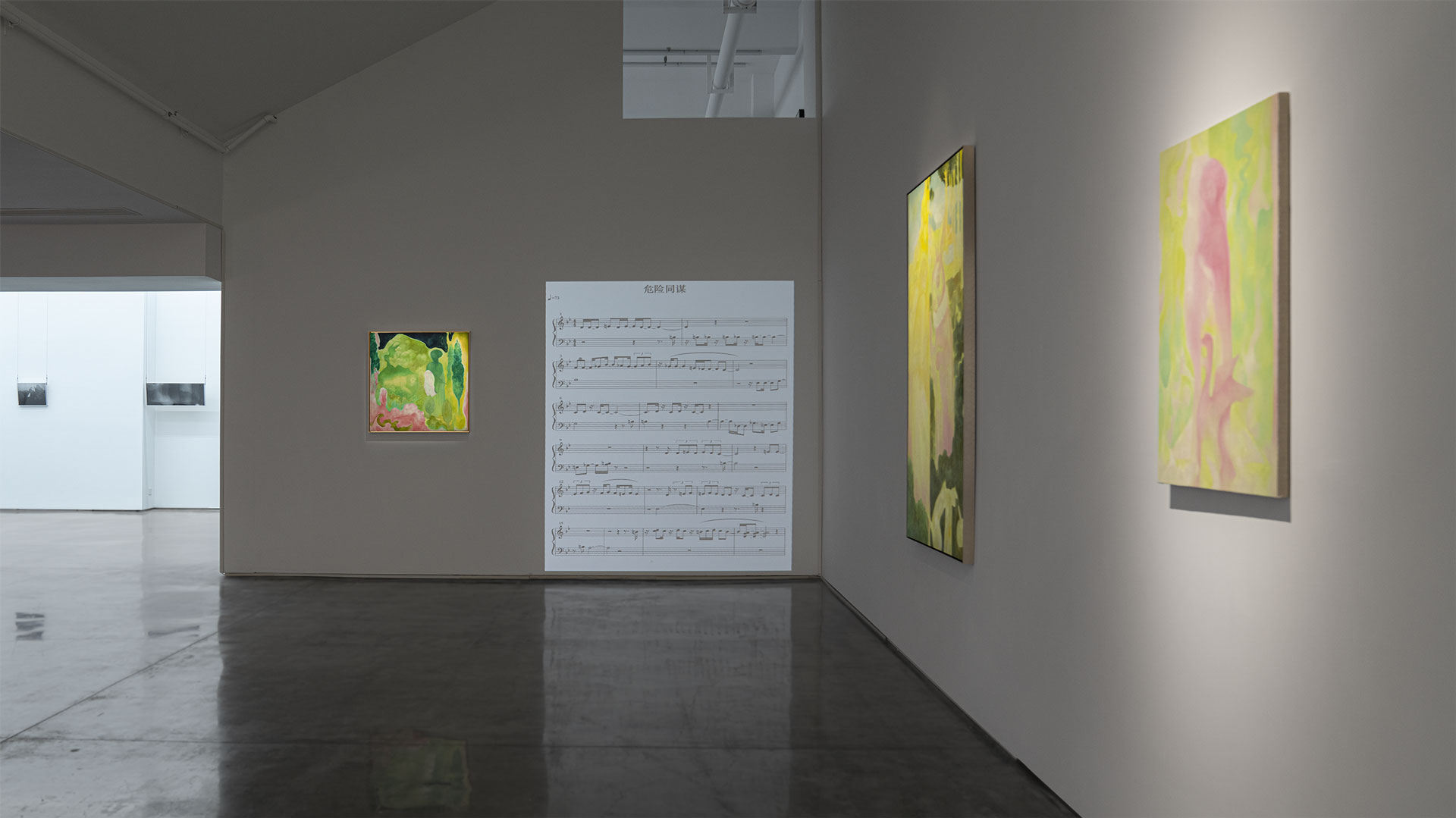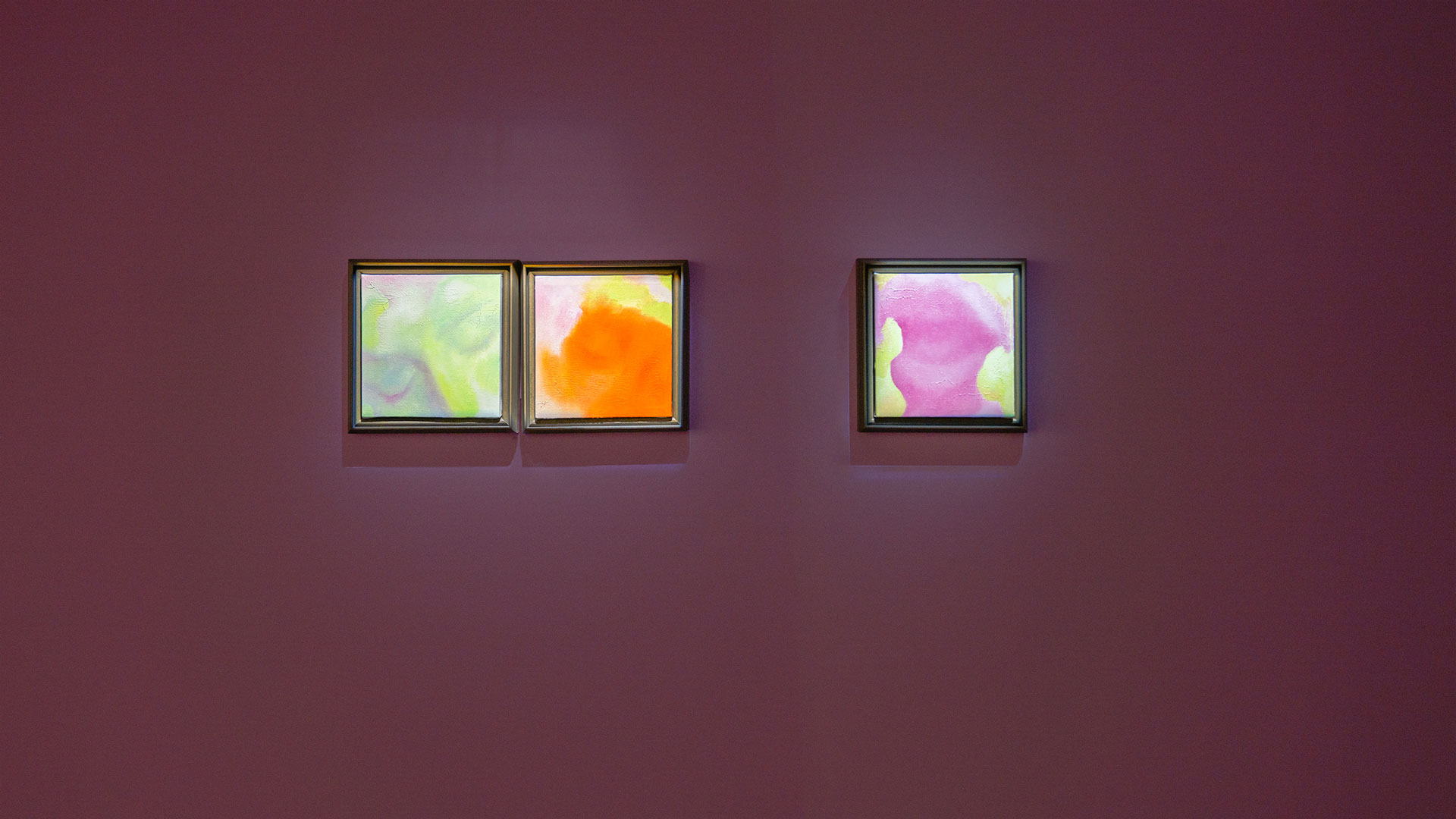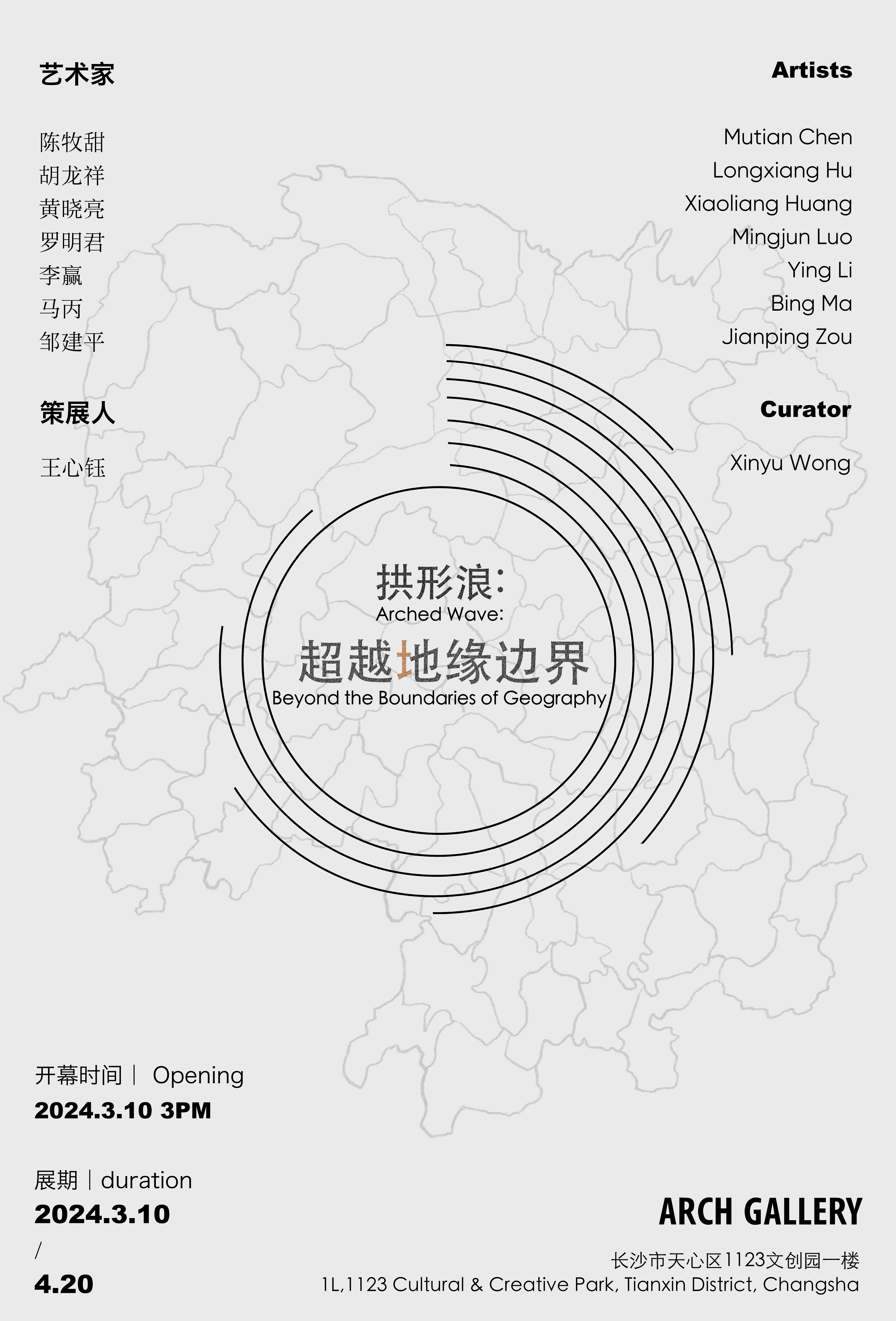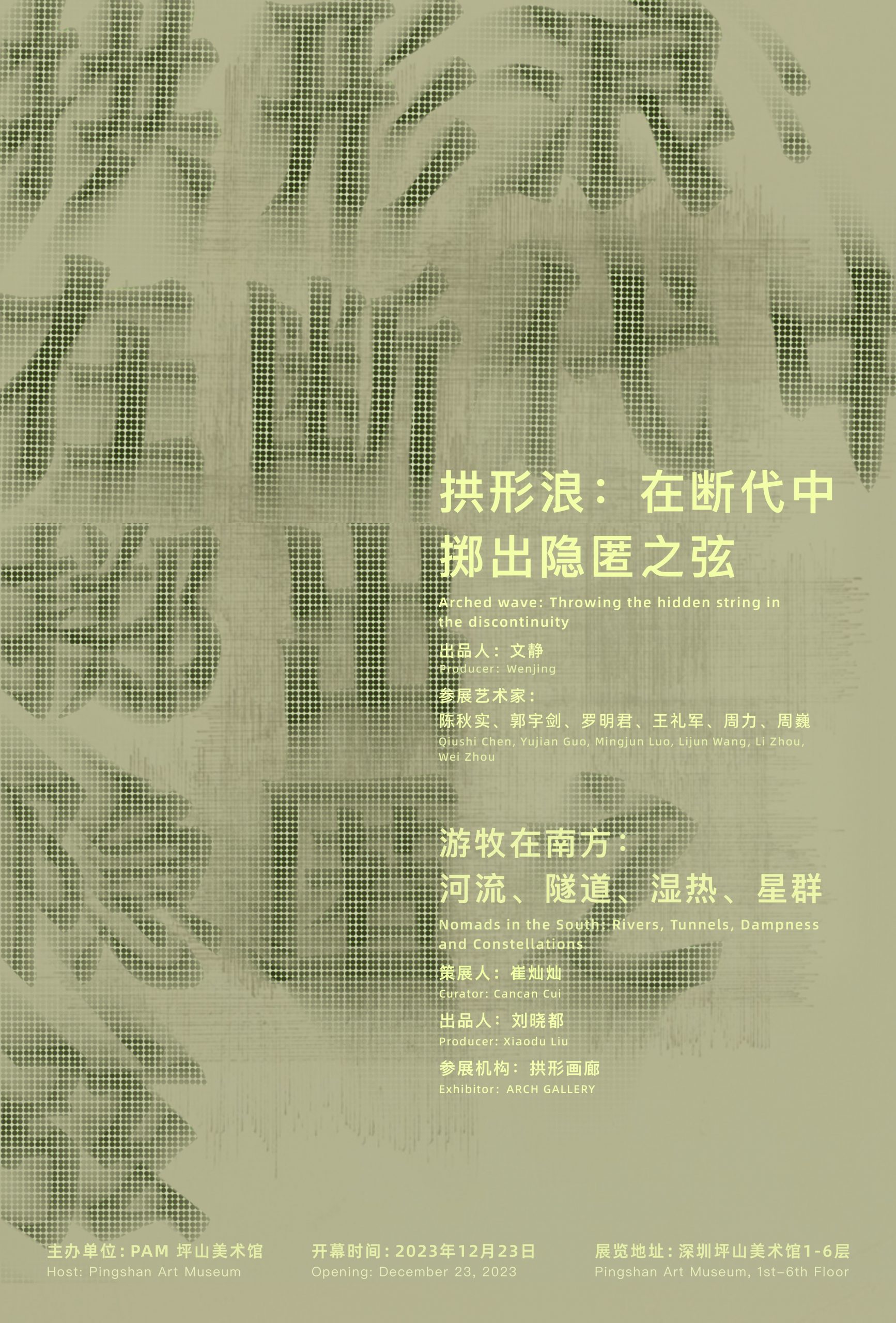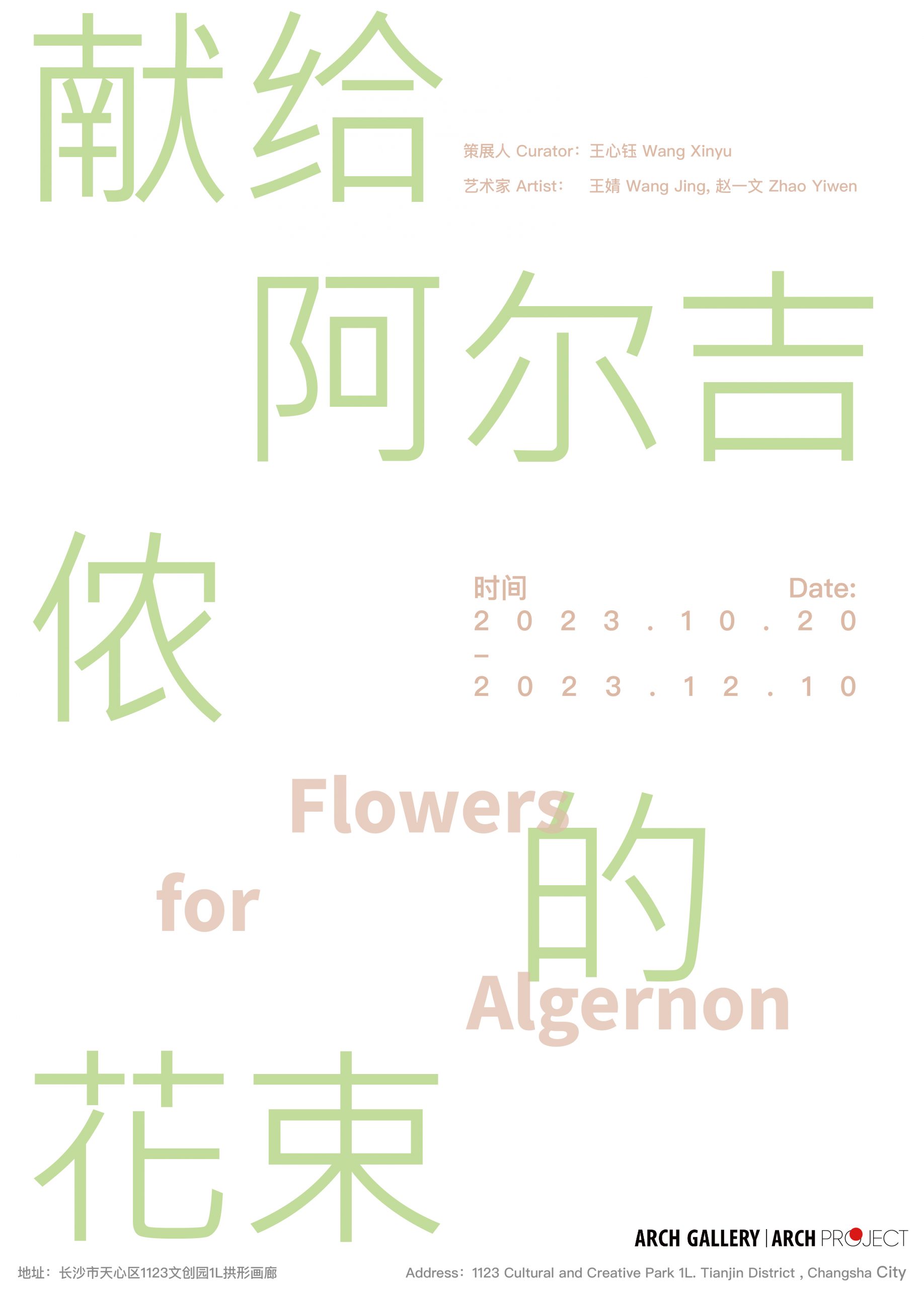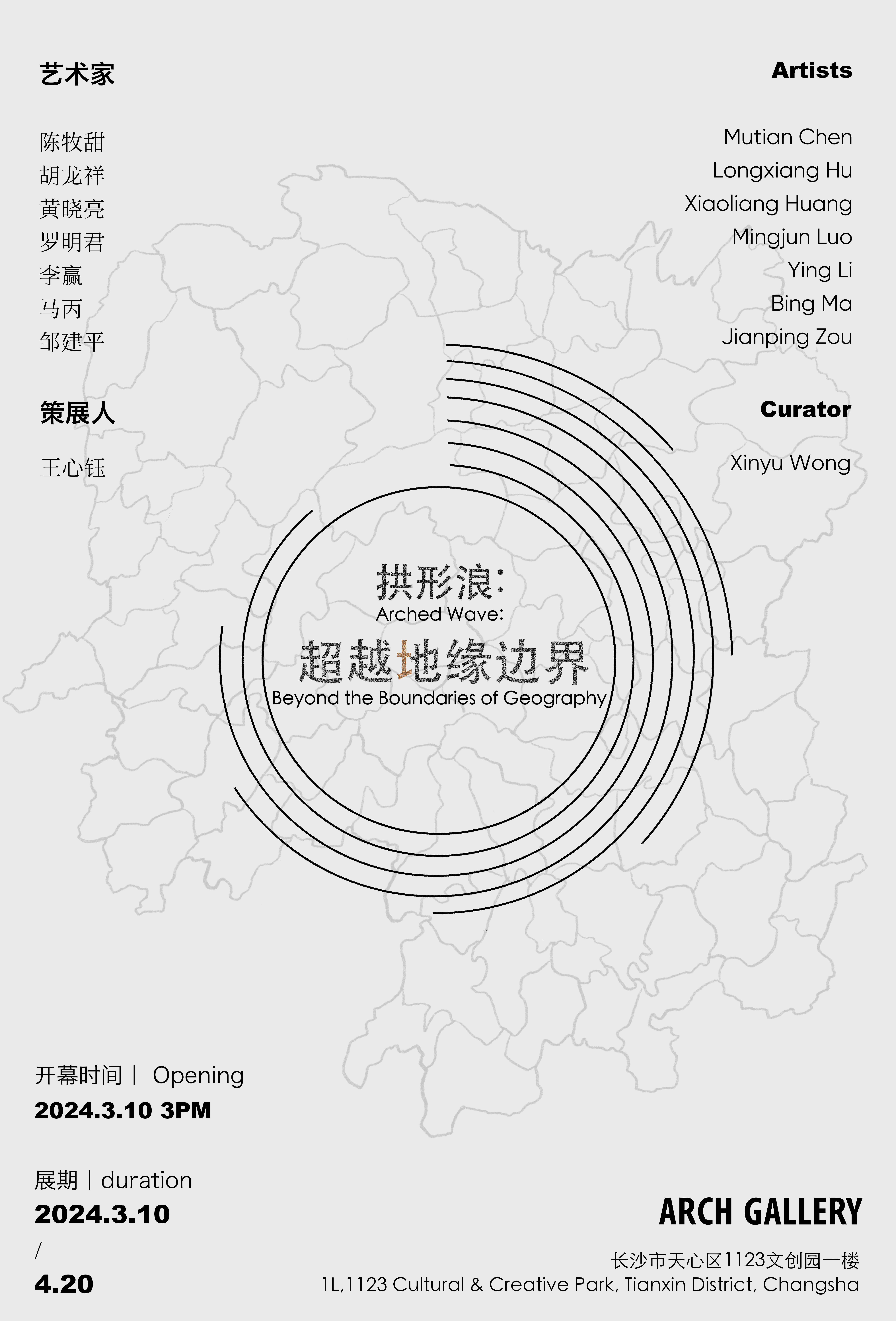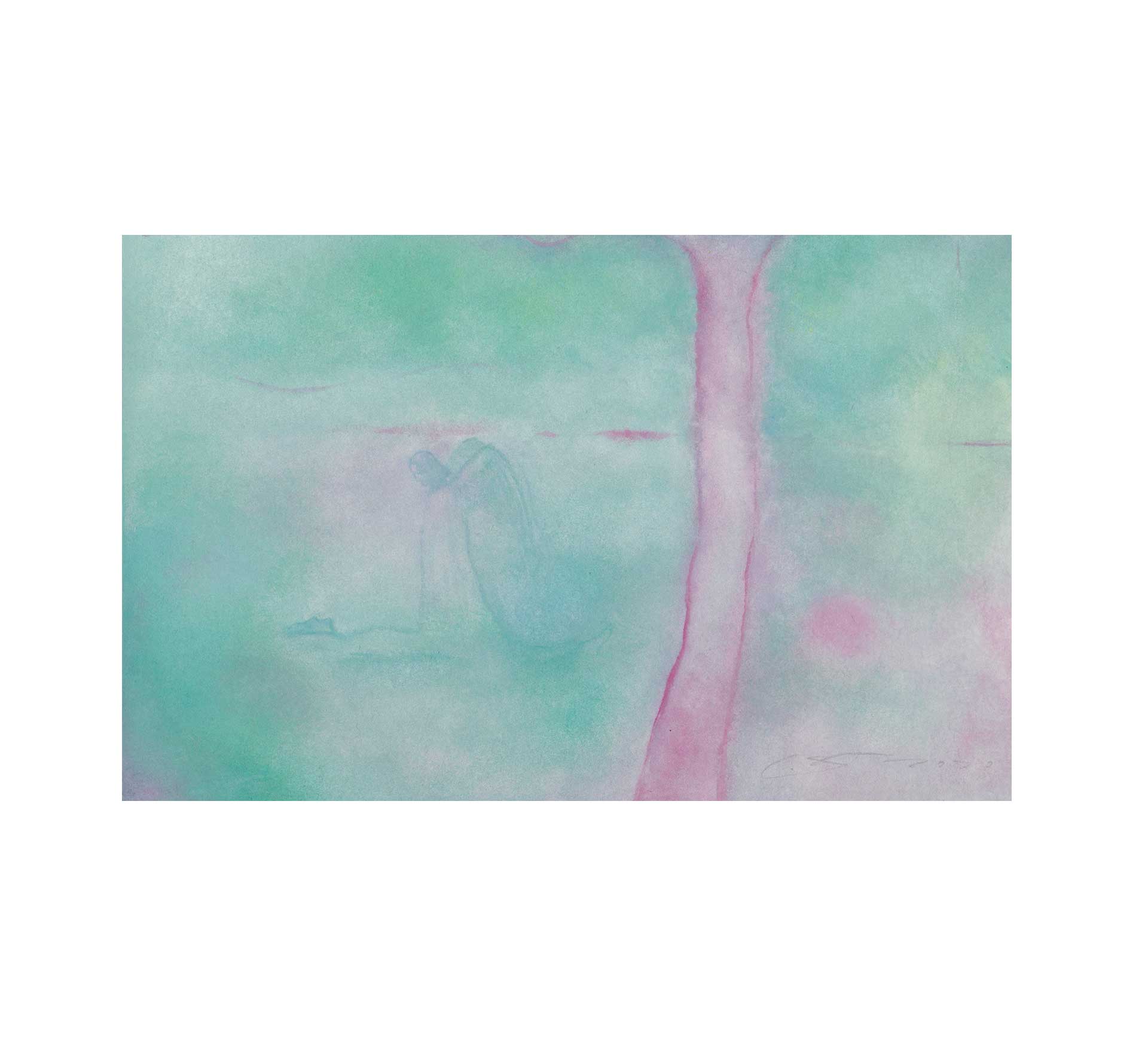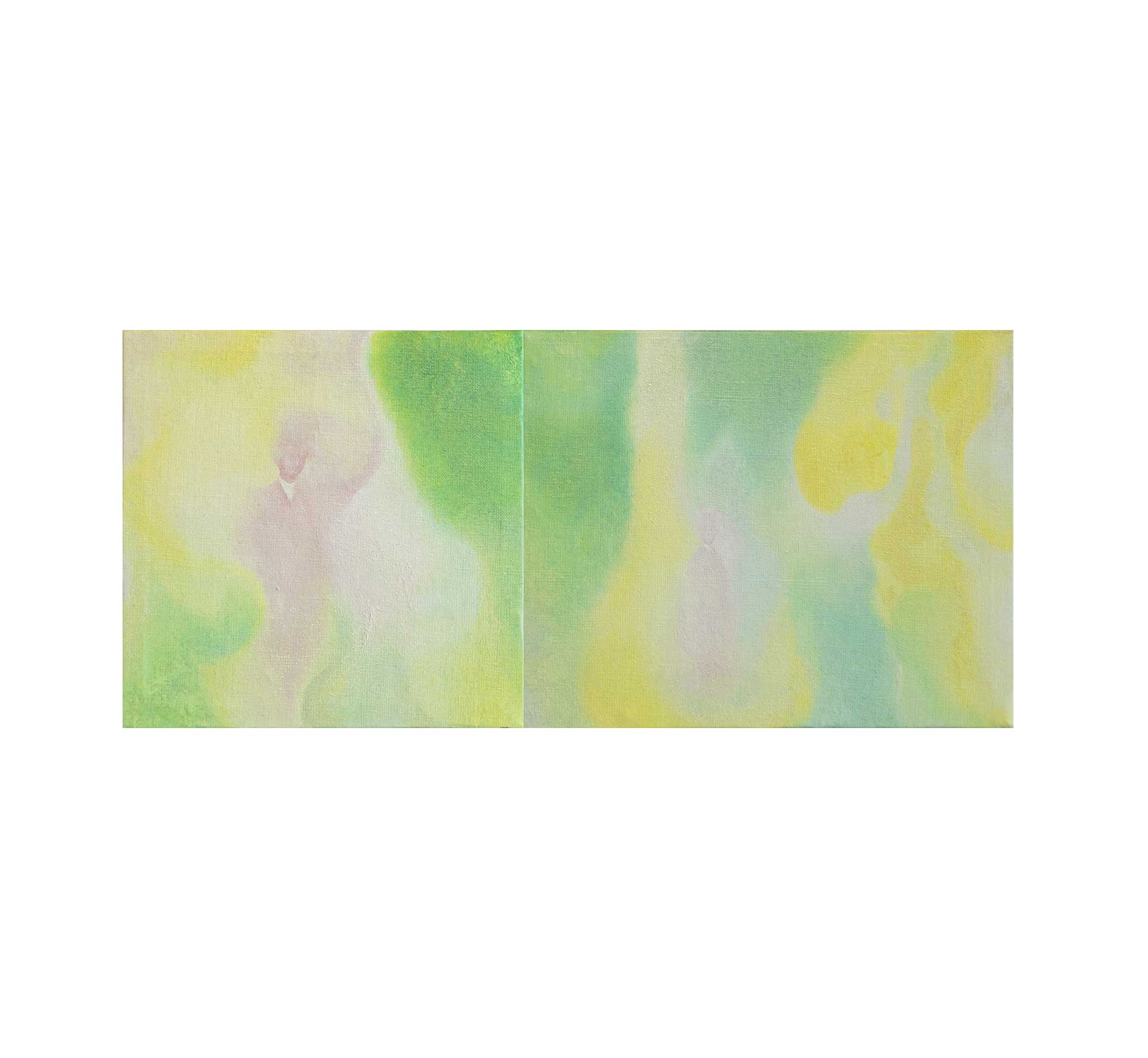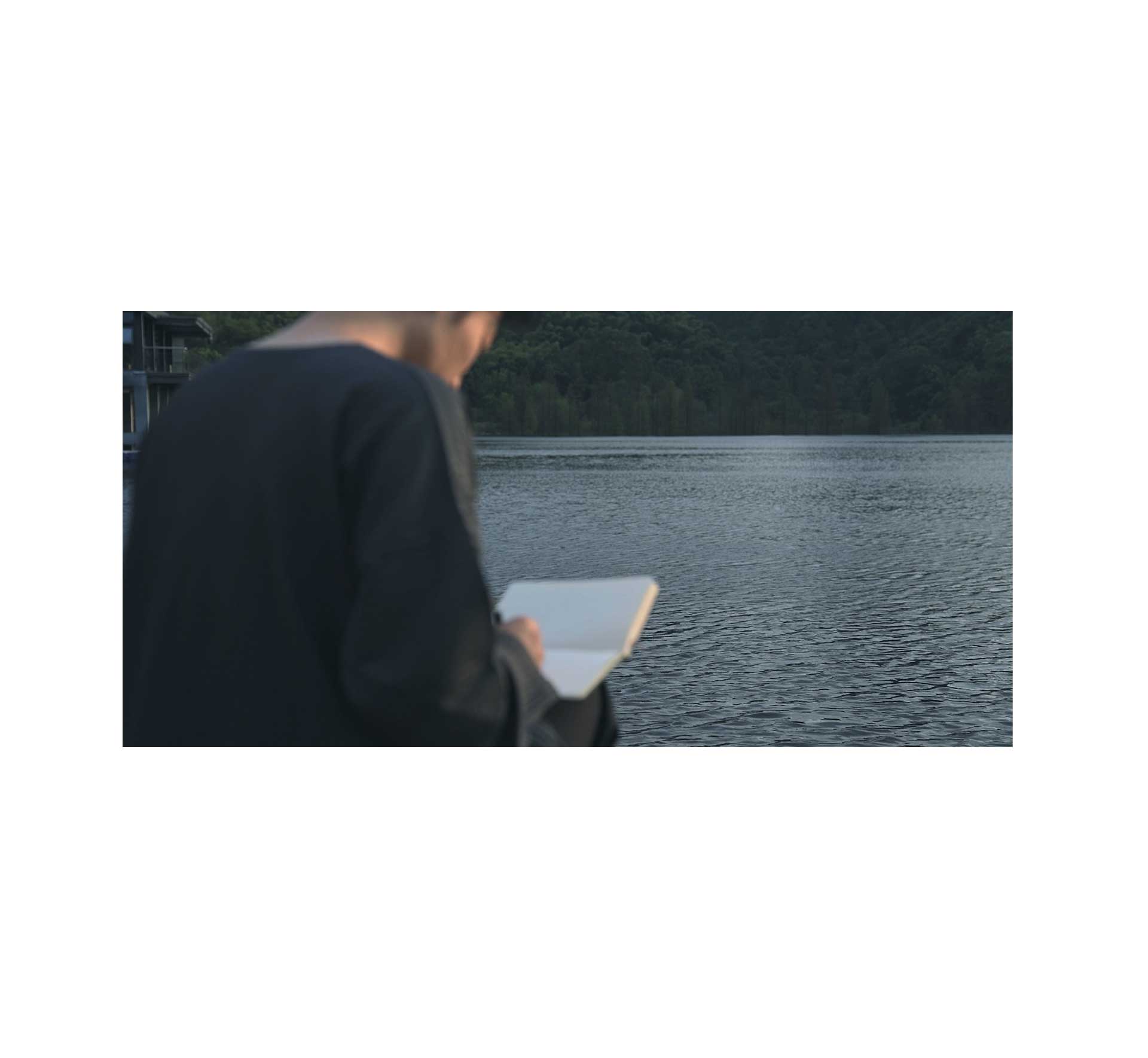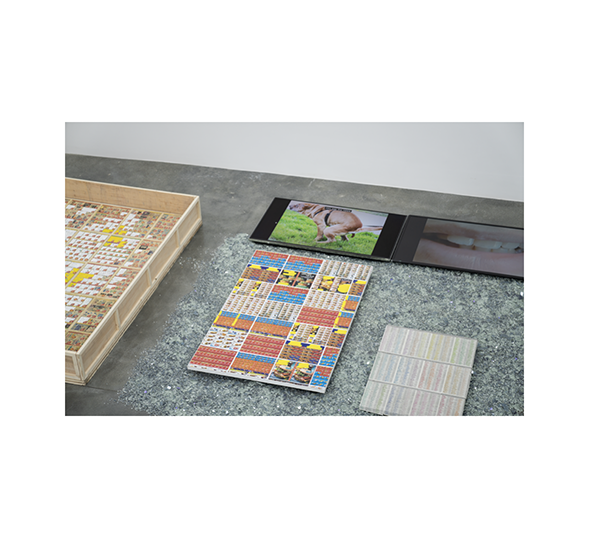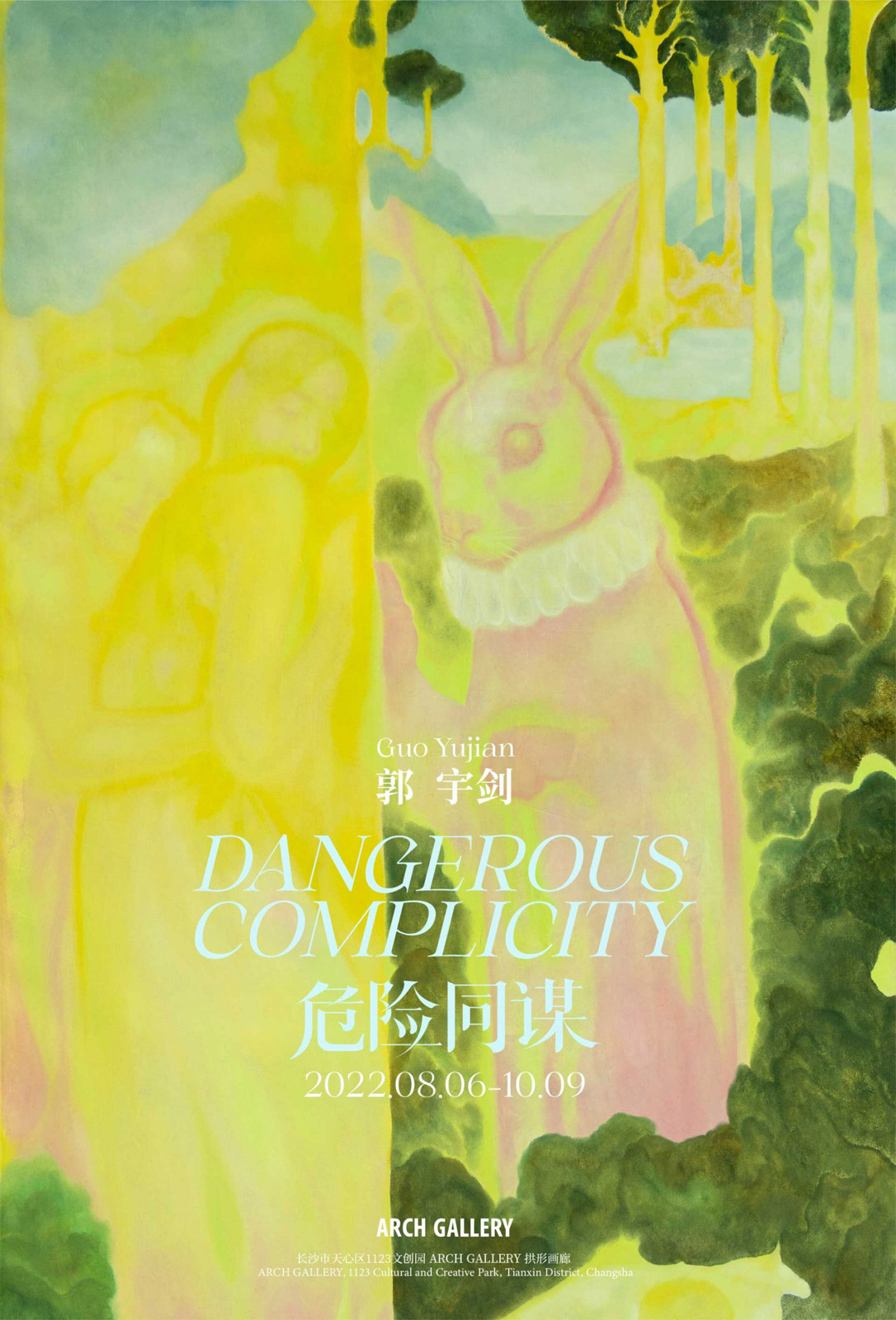
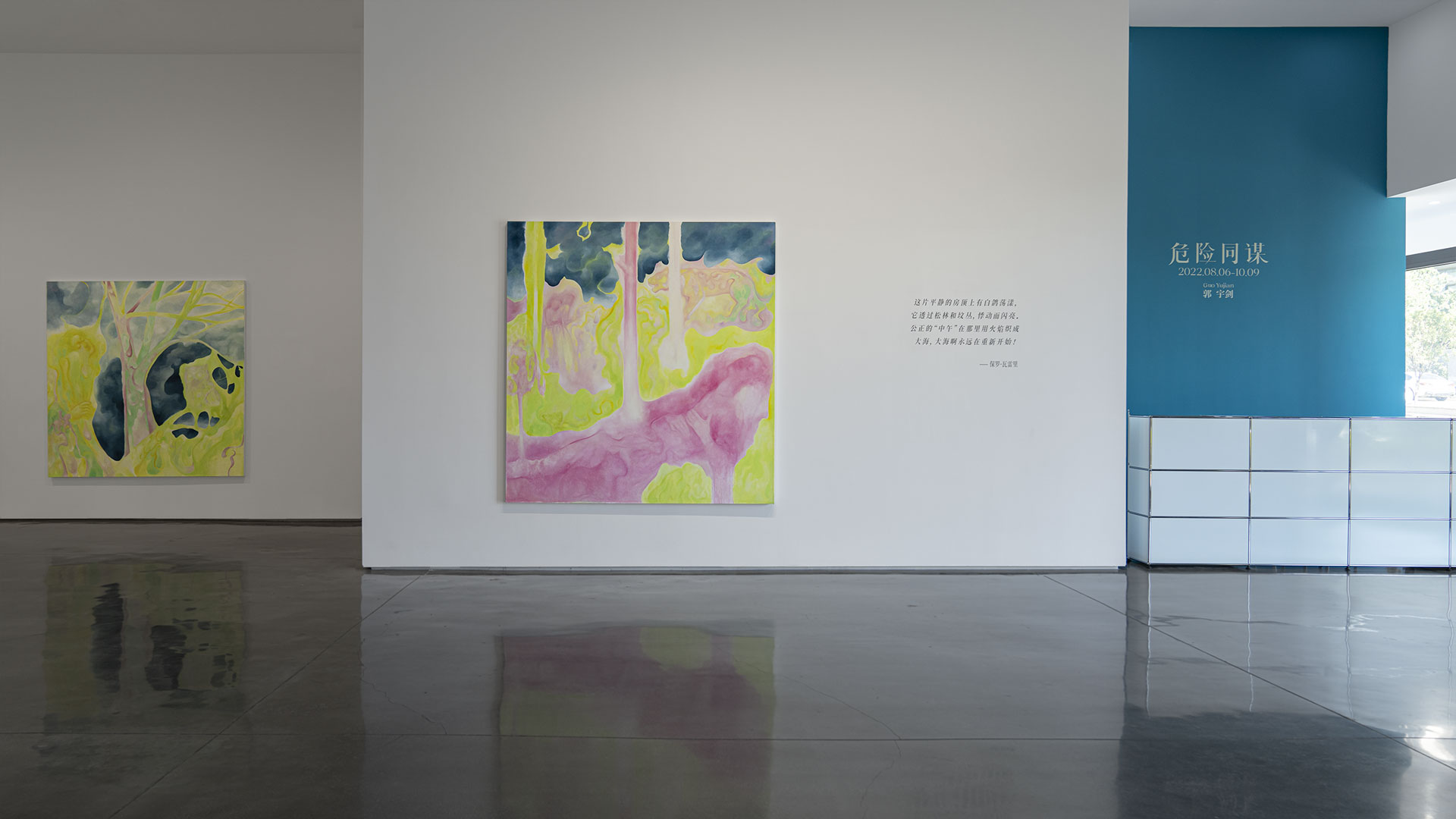
Dangerous Complicity
Artist:Guo Yujian
2022.08.06 – 10.09
Ce toit tranquille, où marchent des colombes,
Entre les pins palpite, entre les tombes;
Midi le juste y compose de feux
La mer, la mer, toujours recommence
– Le Cimetière marin Paul Valéry
Time is passing, and the feeling of the present echoes. Guo Yujian’s paintings are retrospective scenes, and when we look at them, the stories are always so similar, telling themselves over and over again. That’s our nostalgic life. The inescapable, thin comfort becomes a revelation. When we thought we’d found a safe house and quarantined all our anxiety, panic was like air we had to inhale. The danger of contemporaneity, which is deeply embedded in a certain part of our consciousness. A real danger that makes us feel safe—to make everyone fall into a vision of the future. Jouissance in ambiguity, acting as Dionysus. Entertainment without fear of results is obtained in the balance of the seesaw. Neither side will fall absolutely. And the jouissance is in that limited process of going up and down. There is no possibility of an infinite fall. It is only in this balance of far-off balance that the meaning of ambiguity emerges. Hijacking others—seesaw entertainment belongs to the artist and the painting objects—both sides wait for feedback from the other to make their next move. Guo Yujian’s painting is a long pull. Beauty nurtured by inner turmoil. Pigments flow lightly on quietly sloping canvases. The close contact between the fingers and the paint, they carefully probe the perceived nature of the other party.
What Guo Yujian wanted to tell was painted on the canvas naturally. We can also feel it intuitively, preferably with our private memories. We can carefully observe the original work from a distance of tens of centimetres, and the cobalt blue at the top shrouds the clear subject below. The technique he uses requires a moderate amount of patience, using extremely narrow brushes to decorate the junction of the paint, so that the entire picture blends. The brush marks are much clearer after a virtuoso blend of light-toned tinting oils and cold-pressed walnut oils mixed with organics squeezed out of a lead tube. As the paint leaves the bristles, the image that emerges soaks the cloth. There is no obvious edge. It’s still that kind of ambiguous seesaw. The appearance of the subject is certain, it is only a difference of timing. In order to shape the freedom of the identity of the subject, the limbs drive the correction, change, disturbance and creation of sensibility. The initial desire for the painting is hidden into the flow of memory.
And the figures are fictitious. They are memories within memories. The definite faces around them, no matter how vague, could not match. “I’ve never had a plaid tablecloth, but, indirectly, it makes me feel nostalgic. Maybe it’s not a tablecloth, but the rhythm of Italian poetry that cannot be translated exactly into English or Russian; they convince me that the nostalgia is real, even if there is really nothing there.” In any case, these figures are always portrayed. It condenses a kind of memory of hand and memory of canvas. This is a skill that belongs only to an painting artist. The body changes in creation are the medium of communication—the exchange of memories. “The purpose is not to repeat, but to reproduce.” We declare: danger and beauty should be paralleled and they plan together to become entertainment with geschmack.
